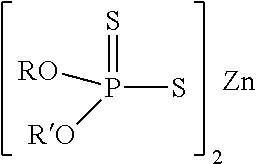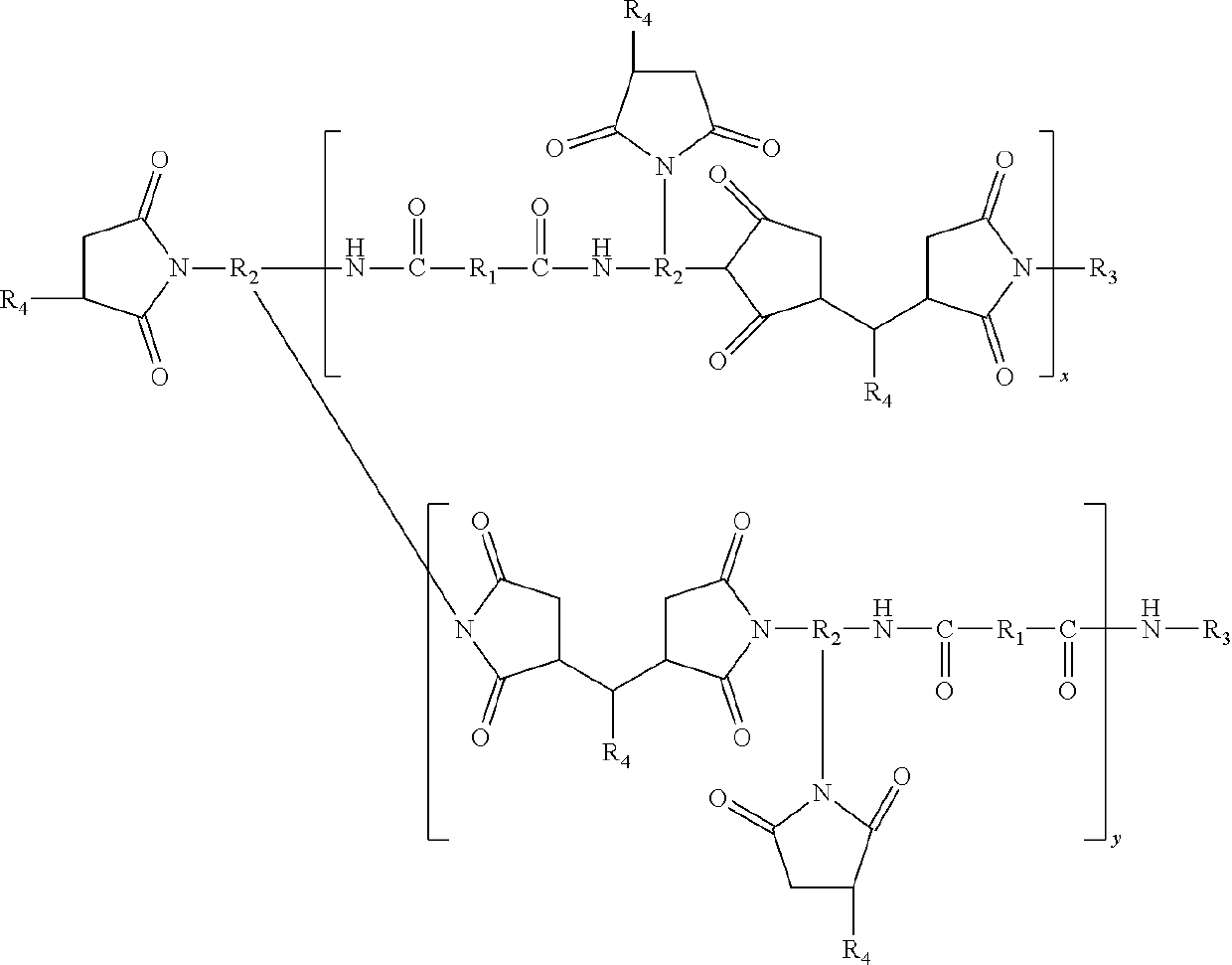Soot dispersant
a technology of soot dispersant and dispersant layer, which is applied in the field of formulation, can solve the problems of increasing the amount of soot in the oil, affecting the soot dispersancy of the oil, and unable to eliminate the accumulation of oil, so as to improve the soot dispersancy
- Summary
- Abstract
- Description
- Claims
- Application Information
AI Technical Summary
Benefits of technology
Problems solved by technology
Method used
Image
Examples
example 1
[0057]Place 302 g of base oil (150N) into a 1000 ml round bottom flask equipped with stirrer, Dean Stark trap and an addition funnel and add 51 g of Trimethylolpropane poly(oxypropylene)triamine (440 g / mol) and 20 g of 4-Aminodiphenylamine (ADPA), heat the above mixture to 160-170 C. Premix 305 g of PIBSA (PIB Mn2300) and 83 g of dimer acid in a beaker and then mixture is transferred to the addition funnel and slowly added to the flask at 170 C in 1 hr. After completion of the above mixture, raise reaction temperature to 220 C and stay at 220 C for 5 hrs. yield: 754 g, Kv100: 517 cSt, TBN: 4.7 mgKOH / g, nitrogen: 0.94 wt %.
example 2
[0058]Place 275 g of base oil (150N) into a 1000 ml round bottom flask equipped with stirrer, Dean Stark trap and an addition funnel and add 40 g of Trimethylolpropane poly(oxypropylene)triamine (440 g / mol) and 16 g of 4-Aminodiphenylamine (ADPA), heat the above mixture to 160-170 C. Premix 305 g of PIBSA (PIB Mn2300) and 56 g of dimer acid in a beaker and then the mixture is transferred to the addition funnel and slowly added to the flask at 170 C in 1 hr. After completion of the above mixture, raise reaction temperature to 220 C and stay at 220 C for 5 hrs. yield: 688 g, Kv100: 372 cSt, TBN: 4.3 mgKOH / g, nitrogen: 0.91 wt %.
example 3
[0059]Place 260 g of base oil (150N) into a 1000 ml round bottom flask equipped with stirrer, Dean Stark trap and an addition funnel and add 34.6 g of Trimethylolpropane poly(oxypropylene)triamine and 13.6 g of 4-Aminodiphenylamine (ADPA), heat the above mixture to 160-170 C. Premix 305 g of PIBSA (PIB Mn2300) and 42 g of dimer acid in a beaker and then mixture is transferred to the addition funnel and slowly added to the flask at 170 C in 1 hr. After completion of the above mixture, raise reaction temperature to 220 C and stay at 220 C for 5 hrs. yield: 650 g, Kv100: 326 cSt, TBN: 4.2 mgKOH / g, nitrogen: 0.80 wt %.
PUM
| Property | Measurement | Unit |
|---|---|---|
| Fraction | aaaaa | aaaaa |
| Fraction | aaaaa | aaaaa |
| Fraction | aaaaa | aaaaa |
Abstract
Description
Claims
Application Information
 Login to View More
Login to View More - R&D
- Intellectual Property
- Life Sciences
- Materials
- Tech Scout
- Unparalleled Data Quality
- Higher Quality Content
- 60% Fewer Hallucinations
Browse by: Latest US Patents, China's latest patents, Technical Efficacy Thesaurus, Application Domain, Technology Topic, Popular Technical Reports.
© 2025 PatSnap. All rights reserved.Legal|Privacy policy|Modern Slavery Act Transparency Statement|Sitemap|About US| Contact US: help@patsnap.com


